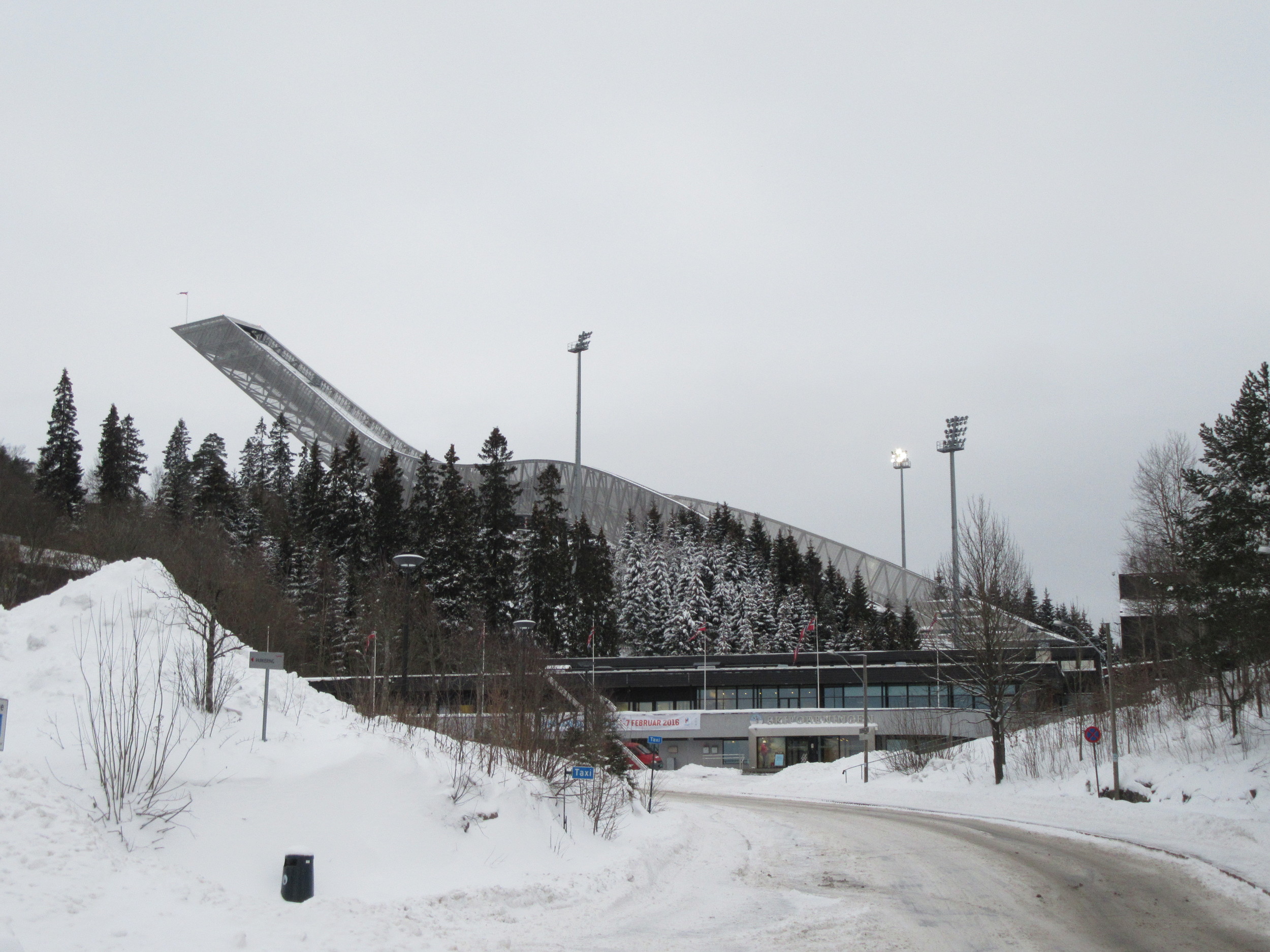There’s Norway you should pass up the opportunity to go to Oslo
/Having landed safely at Manchester Airport on Wednesday, I glanced out the window to see the inhospitable pitter-patter of January precipitation hit the plane.
We eventually disembarked to unorthodox warmth through the rain. As a matter of relative fact, it wasn’t warm at all, rather slightly above freezing – but it seemed a big difference from the Artic conditions endured over the previous three days.
Though it should be told that the bitter temperatures in Oslo were no skin off the city’s nose.
The scenes when we landed at Oslo Rygge Airport were much different than those experienced on arrival back at Manchester.
And why would it be? After all, Norway’s tough winter climate set the likes of Roald Amundsen, the first man to reach both the North and South Poles, in good stead and produces a generous amount of snow, blanketing the Scandinavian nation in a beautiful white veil.
However, I couldn’t help feeling, upon reflection, that the capital city is extremely underrated, despite having personality and friendliness in abundance.
It’s rare that Oslo comes up in conversation online or in person, especially when compared with destinations like Paris, Prague and Budapest.
Though as we (I travelled with my girlfriend) found out, there’s more to do than the ranking of its reputation would lead you to believe.
Preconceptions may well be wrong
In all honesty, I booked Oslo not because I had a hankering to go there, but because Ryanair had cheap flights and I wanted to kick-off my travel blog project by booking a trip away.
In my head, I had Oslo pegged down as a much smaller and less built-up area, but in fact it was much larger than I originally thought.
Modern and built up in places, Oslo was better than I anticipated and deserves respect as one of the best cities in Europe.
This was something that struck me with the utmost immediacy when the coach we got from the airport emerged from a tunnel as it approached the city centre, giving us a nice view of the skyline.
There’s also plenty to do and we even ended up missing out a couple of things, namely the Kon-Tiki Museum and Bislett Stadium. Suffice to say that Oslo exceeded expectations.
Bislett Stadium, home of Lyn Oslo, was on my to-do list, but we didn't manage to cram it in to a packed itinerary. It was also where the opening and closing ceremonies for the 1952 Winter Olympics were held. Image credit: Kjetil Ree/Wikimedia Commons
The Oslo Pass
One of the best things about the trip was the Oslo Pass, which is a card (shown below) allowing access to many of the city’s attractions and all public transport for one, reasonable cost.
My Oslo Pass covered me for everything we managed to do over the three days.
Adults
24 hours: 335 NOK (£26.80 approx.)
48 hours: 490 NOK (£39.20)
72 hours: 620 NOK (£49.60)
Children/Seniors
24 hours: 170 NOK (£13.60)
48 hours: 250 NOK (£20)
72 hours: 310 NOK (£24.80)
I was able to get 20 percent off the adult price as I am a student and showed my student card to the lady behind the desk, so I ended up paying 392 NOK for a 48-hour pass (£31.36) which was a saving of 18 NOK (£1.44) on the museums we visited, and a further 180 NOK (£14.40) on the cost of transportation. A saving of over £15 makes it more than worth it, and that is a number likely to be greater on a full-priced adult pass.
Alongside the free entry and transportation, there are also several restaurants and cafés that give 20% off food to Oslo Pass holders.
Best of the best
Although there is a lot to see and do in Oslo, the Norwegian Folk Museum and the Holmenkollen Ski Museum are must visits.
An old storehouse on display at the Folk Museum. The contrast between the sunburst wood and the white snow was something to behold.
The Folk Museum is open-air, and provides a unique look at Norse settlements and buildings dating back centuries to roughly around 50 years ago.
Many of the buildings there have been imported and re-erected, and there are 150 traditional houses in total, as well as a stave church dating back to 1212.
The stave church was brought to Oslo from the municipality of Gol.
It is something that is impressive at any time of the year, but even more so in the winter as the snow creates stunning views and photo opportunities.
The Folk Museum even had a play area which, of course, I had to try out!
Holmenkollen Ski Museum is located at the Holmenkollen Ski Jump up on a big hill overlooking Oslo, and takes roughly half an hour by train to get to.
The ski jump is visible from many parts of the city centre as it is a large and protruding structure on the hillside.
It is worth the trip just for the ride up there, and the stunning views once you get to the top of the hill. Let alone the fact that for any ski fanatic, it is home to the world’s oldest ski museum and was a host venue for the 1952 Winter Olympics.
Looking down at the frightening descent at Holmenkollen Ski Jump.
The view that the skiers get pre-jump. Yikes!
The museum is as enthralling as the ski jump itself, and tells the tale of much of the history of Norway’s national sport, as well as the many renovations it has undertaken since it opened back in 1892.
Then there’s the viewing platform which rises above the jump’s summit. In the winter months it is breathtakingly cold, and the elevation does not help with the wind chill. But the 360-degree views over the Østlandet region are worth braving the astringent climate for.
Oh, and not forgetting the interactive area which has spring-mounted snowboard and skis, an auditorium showing a film about the Northern Lights and, wait for it… A BALL POOL (without age restrictions)!
The ball pool complete with slide!
Other things worth trying
One of my favourite museums in Oslo was the Fram Museum along the Bydgøy peninsula. Inside the one of the two tent-like structures was the polar ship Fram (Norwegian for ‘forward’), which Amundsen used to get to both poles.
On board the polar ship, Fram.
The ship is accessible to the public and being inside gives a great impression of the day-to-day environment of being on the ship during its expeditions.
There is also the exhibition of the Gjøa, the first ship to navigate the Northwest Passage, although you can’t actually board that ship.
And if you want to take advantage of the cold, then there are a number of ice rinks in Oslo. We hit the rink at Spikersuppa, which is right in the centre and is free to use, with skate hire an additional 100 NOK (£8). It’s a great rink for beginners, tourists and those who don’t want to take it too seriously. Though for 40 NOK (£3.20) extra, you get skates and access to the larger rink at Frogner Stadion, which has artificial ice in the winter for speed skating and hockey.
A game of ice hockey taking place at Frogner Stadion.
Though I’m not big on art, I was intrigued to go to the National Gallery to see world-famous painting The Scream, by Edvard Munch. There are four versions, three of which are still in Oslo, though the one I saw was the original, and something different to the norm on my travels.
I'm not a big art fan, yet I was still thrilled to be able to see The Scream.
Saving the best ‘til last?
A nice final day image of me and Gab at Oslo Harbour.
With our coach to the airport leaving at 15:15 on the final day, we had a few hours to play around with beforehand.
I wanted to check out the Nobel Peace Centre as I had heard good things, and then head over to the National Opera House.
But as we exited one and made our way to another, we finally saw the first cloudless sky of the trip, and shining over Oslo’s inlet was the Sun in all its stunning glory, looking like it was stuck between sunrise and sunset.
It was Scandinavian perfection which incandescently lit up our surroundings, affording us the opportunity to produce some amazing imagery.
Looking toward the National Opera House.
The cons
We went in winter, which means less daylight and shorter business hours. While there is still plenty of time to get things done, it can be a bit restrictive as places can open as late as midday, and close as early as three in the afternoon. There are also no fjord cruises on between November and March, which can be disappointing if you were hoping to see them up-close.
There’s also the small matter of the cold, meaning that thermal clothing is essential. Be careful not to fall over trying to navigate the treacherous ground below. Parts with a manageable build-up of snow provide havens of traction and should help to prevent slips and falls.
I’d also imagine that in the summer, although retaining some of it beauty, the city isn’t quite as picturesque as it is when snow-laden.
But there was one factor in particular that could be off-putting for some – price. While the Oslo Pass covers attractions and transport, it doesn’t pay for your food and drink. A bottle of Coca-Cola costs in the region of £2.50-£3, while you’d be hard-pressed to find a standard 500ml bottle of water for less than £2.
Due to taxes and a high cost of living in Norway, alcohol is an expensive purchase. It works out at roughly £9 for a pint of lager, though the home-grown Rignes pilsner is quite tasty.
Despite the price, I enjoyed the beer at Hard Rock Cafe Oslo.
Yes, it is expensive, but fear not as there are affordable places to dine. Located just behind the twin towers of the town hall is Italian joint Prima Fila, who serve hearty food to fill your stomach for a nominal fee. Their prices for alcohol also seem to dip slightly below the norm, and the ambiance in the restaurant puts you at ease, whilst not compromising the feeling of a high-class establishment.
About to tuck in to a delicious pizza at Prima Fila.
Plenty of the cities eateries also offer lunch menus, so to save money it is a good idea to fill up in the afternoon and have smaller evening dishes, which should leave you with a few extra kroner.
Flights and accommodation
I booked the flights through Ryanair, costing about £35 return from Manchester, although this route is available from several airports across the United Kingdom at a similar price. Norwegian are another airline that have affordable flights to their capital from the UK.
The room is basic, but one of the cheapest in the city. You don't really need any further amenities for a short city break.
The bathroom was surprisingly a sanctuary of warmth after a long day out in the cold.
Accommodation, much like food and drink, is an expensive cost in Oslo, but Citybox Oslo has double rooms for £50 per night and provides a great base for exploration. The beds are comfortable and there are plugs by them (which many places don’t seem to have upgraded to yet), and it’s located in the city centre, close to the main bus and train stations and walking distance to all of the central attractions.











































Looking for Bergen ideas? Here’s a rundown of the five things you have to do in Bergen, Norway.